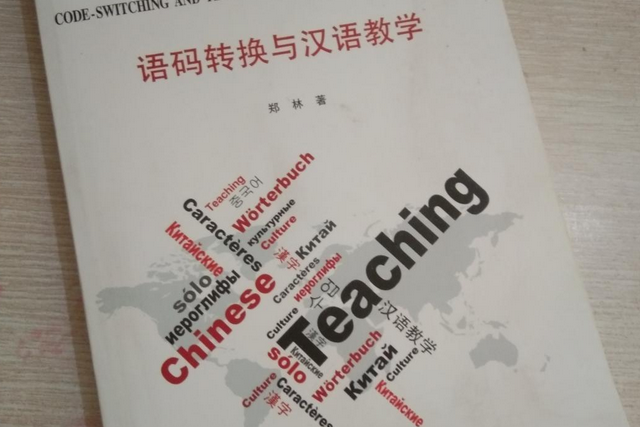圖書目錄
Preface
Acknowledgments
List of Tables
List of Figures
List of Abbreviations
CHAPTER 1 INTRODUCTION
1.1 Aim
1.2 The Chinese language
1.3 Structure
CHAPTER 2 CODE SWITCHING AND CODE CHOICES
2.0 Introduction
2.1 Definitions of code switching
2.2 Code switching and borrowing
2.3 Types of code switching
2.4 Grammatical constraints and other universal issues on code switching
2.4.1 Grammatical constraints on code switching
2.4.2 Other issues
2.4.2.1 Trigger—words and triggering
2.4.2.2 'Mixed grammar' or 'grammar for code switching'
2.4.2.3 Matrix language and marginal passages
2.4.3 The Matrix Language Frame model
2.5 Functions motivated by pragmatic or sociolinguistic factors
2.5.1 ' Transactional' or conversational functions
2.5.1.1 Topic or referential function
2.5.2 Discourse functions
2.5.2.1 The function of distinguishing direct speech from reported one or quotations
2.5.2.2 The function of specifying an addressee as the recipient of the message
2.5.2.3 The function of making injections or serving as sentence fillers
2.5.2.4 The function of clarifying or emphasising a message
2.5.2.5 The function of qualifying the message
2.5.2.6 The function of marking personalization vs.objectivization
2.5.2.7 The function of marking types of discourse or genres
2.5.2.8 Discourse strategies and the markedness model
2.5.3 Stylistic functions
2.5.4 The function of gap in vocabulary
2.6 Conversational analysis, social network and family
2.7 Attitudes toward code switching
2.8 Language policy in Victoria, Australia and the role of education in minority language maintenance
2.9 Conclusion
CHAPTER 3 RESEARCH METHODOLOGY OF THE STUDY
3.0 Introduction
3.1 Hypothesis and research questions
3.2 Justification
3.3 Subjects
3.4 Methodology
3.5 Session A
3.5.1 The collection of narratives
3.5.2 The descriptive task
3.6 Session B
3.6.1 Addition
3.6.2 The collection of narrative depicted on video
3.6.3 The collection of narrative about holidays
3.7 Session C
3.7.1 The collection of Chinese family narrative
3.7.2 The narrative task of zoo
3.8 Session D
3.8.1 The language background questionnaire
3.8.2 The students' everyday life questionnaire
3.8.3 The students' family life questionnaire
3.9 Notes on terminology
CHAPTER 4 TONAL ASPECTS OF SWITCHING
4.0 Introduction
4.1 Tones in Chinese and stress patterns of Chinese and English
4.1.1 Tones in Chinese
4.1.2 Stress patterns of Chinese
4.1.3 Stress patterns of English
4.2 Effect of tones and stress patterns on switching
4.3 Quantification of tones
4.4 Single switching facilitated by the Chinese falling tones and stress patterns
4.4.1 The fourth falling tone
4.4.2 The half third falling tone
4.4.3 The neutralfalling tone
4.4.4 Summary of single switches to English facilitated by falling tones
4.5 Switching in and out of English facilitated by the Chinese falling tones
4.6 Switching of English phrases at the beginning of an utterance which is part of Chinese discourse with switch back to Chinese occurring
4.7 Chinese utterances but with frequent switching facilitated by falling tones
4.8 Switching at other tones (i.e.Tone 1 and 2)
4.8.1 Switching motivated by 'repairs'
4.8.2 Switching motivated by various functions
4.9 Summary and conclusions
CHAPTER 5 THE PLACE OF GRAMMATICAL STRUCTURES IN CHINESE UTTERANCES AND SWITCHING
5.0 Introduction
5.1 Chinese and English syntax
5.2 Syntactic and semantic transference from English without switching
5.2.1 Syntactic transference at sentence level
5.2.1.1 The adverbial position factor
5.2.1.2 Attributive position
5.2.1.3 The order of the date transferred from English
5.2.1.4 The order of comparison of adjective / adverb transferred from English
5.2.2 Syntactic transference or convergence at unit level
5.2.2.1 The structure of predicate unit transferred from English
5.2.2.2 The structure of prepositional phrase converged towards English
5.2.3 Semantic transference—collocation based on English models
5.2.3.1 Semantic transference of English idioms
5.2.3.2 Semantic transference of English nouns or noun phrases
5.2.3.3 Semantic transference of a preposition
5.2.4 Concluding remarks on syntactic / semantic transference
5.3 Syntactic convergence and switching
5.3.1 Grammatical systems
5.3.1.1 The marked use of case morphology
5.3.1.2 The marked use of the progressive
5.3.1.3 Overt—verb marker facilitators
5.3.1.3.1 'Bare form of the verb'
5.3.1.3.2 'EL islands'
5.3.1.3.3 Chinese auxiliary + English verb
5.3.1.4 The coverb facilitators
5.3.1.5 Concluding remarks on typology
5.3.2 Word order
5.3.2.1 Adverbial position
5.3.2.2 Attributive position
5.3.2.3 Order of residential address and date
5.3.2.4 The order of comparison of adjective / adverb
5.3.3 Grammatical classes
5.3.4 Concluding remarks on syntactic convergence and switching
5.4 Other structural constraints on switching
5.4.1 The phrase boundary as a point of switching
5.4.1.1 Switching of a prepositional phrase and 'semantic constraint '
5.4.1.2 Switching of an adverbial phrase
5.4.1.3 Concluding remarks on the phrase boundary as a point of switching
5.4.2 'Conjunction constraint' or 'sentence insertion'
5.4.3 'Free—morpheme constraint'
5.4.3.1 Switching to a Chinese structure particle—DE
5.4.3.2 Switching to a Chinese modal particle—LE
5.4.3.3 Concluding remarks on contraventions of the'free—morphemeconstraint'
5.4.4 Violations of 'the government constraint'
5.4.4.1 Switching from a Chinese V to an English O
5.4.4.2 Switching between English V and Chinese O
5.4.4.3 Switching between Chinese preposition and English noun or noun phrase
5.4.4.4 Switching between English preposition and Chinese noun or noun phrase
5.4.4.5 Concluding remarks on the violation of 'government constraint'
5.5 Interpretation of some switching data according to the Matrix Language Frame model
5.5.1 The hypothesis of ML and EL constituents
5.5.2 The 'EL islands' hypothesis
5.5.2.1 'Obligatory EL islands '
5.5.2.2 ' Optional EL islands '
5.5.3 Discussion
5.6 Summary and conclusions
……
CHAPTER 6 CONTEXTUAL FACTORS IN SWITCHING
CHAPTER 7 SCHOOL EDUCATION AND CHINESE LANGUAGE MAINTENANCE
CHAPTER 8 IMPLICATIONS FOR TEACHING CHINESE AS A SECOND LANGUAGE
APPENDIX A Sample Questionnaire
內容簡介
《語碼轉換與漢語教學》探索了澳洲華裔中英雙語兒童在進行語碼轉換時的決定因素。它研究了語碼轉換時與
語法結構之間的關係、與聲調之間的關係、與語言交際功能之間的關係以及雙語兒童的社會背景和參加學校第二語言課程學習的關係等。旨在進一步完善對當前兒童語碼轉換的理論,並且據此提出相應的對外漢語教學策略。
作者簡介
鄭林,北京師範大學文學學士,澳大利亞莫納什大學教育學碩士,語言學博士,師從澳大利亞語言學界泰斗Professor Michael CIyne。現任澳大利亞迪肯大學人文與社會科學學院高級講師、博士生導師。

